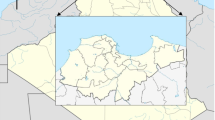Abstract
We used to be focus in concerns by taking particulate matters, NOx, VOCs and CO2 emission by combustion of fossil fuels, i.e. coal, crude oil and natural gas. The combustion of these fuels has been a major source of environmental pollution posing health hazards. The goal of this study was to examine the relationship between the monthly fuel energy demand and the weather variable, such as the temperature, and in this paper, a few energy usage patterns were introduced by using the energy saving potential calculation method. These can result for forecasting the analysis of the heating and cooling energy demand of urban city, and we can produce the reliable emission data for various environmental modeling tools.
Access this chapter
Tax calculation will be finalised at checkout
Purchases are for personal use only
Preview
Unable to display preview. Download preview PDF.
Similar content being viewed by others
References
Swan, L.G.: Modeling of end-use energy consumption in the residential sector: A review of modeling techniques. Renewable and Sustainable Energy Reviews 13, 1819–1835 (2009)
Schleich, J.: Barriers to energy efficiency: A comparison across the German commercial and services sector. Ecological Economics 68, 2150–2159 (2009)
Duryamaz, A., Kadıoglu, M., S¸en, Z.: An application of the degree-hours method to estimate the residential heating energy requirement and fuel consumption in Istanbul. Energy 25, 1245–1256 (2000)
Sȩn, Z., Kadıoglu, M.: Heating degree-days for arid regions. Energy 23, 1089–1094 (1997)
Bu yu kalaca, O., Bulut, H., Yılmaz, T.: Analysis of variable-base heating and cooling degree-days for Turkey. Applied Energy 69, 269–283 (2001)
Satman, A., Yalçınkaya, N.: Heating and cooling degree-hours for Turkey. Energy 24, 833–840 (1999)
Matzarakis, A., Balafoutis, C.: Heating degree-days over Greece as an index of energy consumption. International Journal of Climatology 24, 1817–1828 (2004)
Bodescu, V., Zamfir, E.: Degree-days, degree-hours and ambient temperature bin data from monthly-average temperatures (Romania). Energy Conversion & Management 40, 885–900 (1999)
Sarak, H., Satman, A.: The degree-days method to estimate the residential heating natural gas consumption in Turkey: a case study. Energy 28, 929–939 (2003)
Lorusso, A., Maraziti, F.: Heating system projects using the degree-days method in livestock building. Journal of Agricultural Engineering Research 71, 285–290 (1998)
Bellia, L., Mazzei, P., Polombo, A.: Weather data for building energy cost-benefit analysis. International Journal of Energy Research 22, 1205–1215 (1998)
Christenson, M., Manz, H., Gyalistras, D.: Climate warming impact on degree-days and building energy demand in Switzerland. Energy Conversion & Management 47, 671–686 (2006)
Kim, S.H., et al.: Korean energy demand in the new millennium: outlook and policy implications, 2000-2005. Energy Policy 29, 899–910 (2001)
Seoul Metropolitan Government. Regional energy plan of Seoul city, Seoul (2003)
Yoo, S.-H., et al.: Estimating the residential demand function for natural gas in Seoul with correction for sample selection bias. Applied Energy 86, 460–465 (2009)
Lee, K.-M.: Life cycle inventory analysis for electricity in Korea. Energy 29, 87–101 (2004)
Author information
Authors and Affiliations
Editor information
Editors and Affiliations
Rights and permissions
Copyright information
© 2010 Springer-Verlag Berlin Heidelberg
About this paper
Cite this paper
Kim, S.D., Lee, I.H., Cheon, S.M. (2010). The Calculation Method of Heating and Cooling Energy Saving Potential in Urban District. In: Taniar, D., Gervasi, O., Murgante, B., Pardede, E., Apduhan, B.O. (eds) Computational Science and Its Applications – ICCSA 2010. ICCSA 2010. Lecture Notes in Computer Science, vol 6016. Springer, Berlin, Heidelberg. https://doi.org/10.1007/978-3-642-12156-2_14
Download citation
DOI: https://doi.org/10.1007/978-3-642-12156-2_14
Publisher Name: Springer, Berlin, Heidelberg
Print ISBN: 978-3-642-12155-5
Online ISBN: 978-3-642-12156-2
eBook Packages: Computer ScienceComputer Science (R0)




